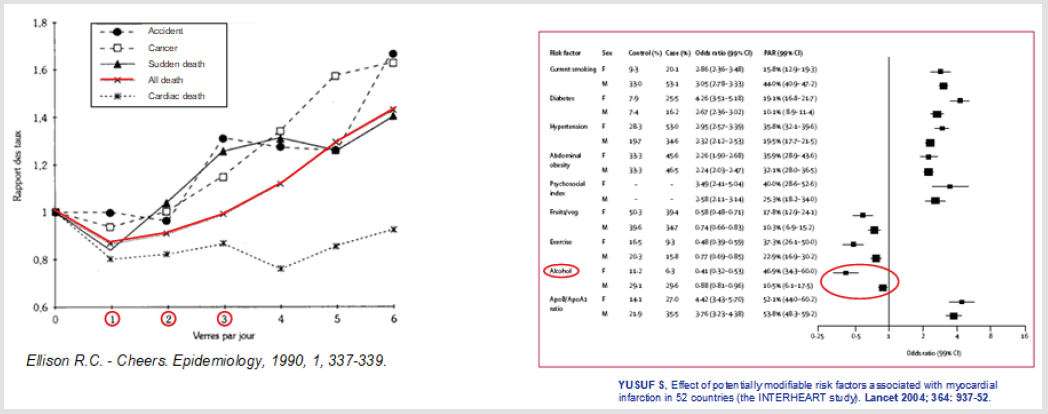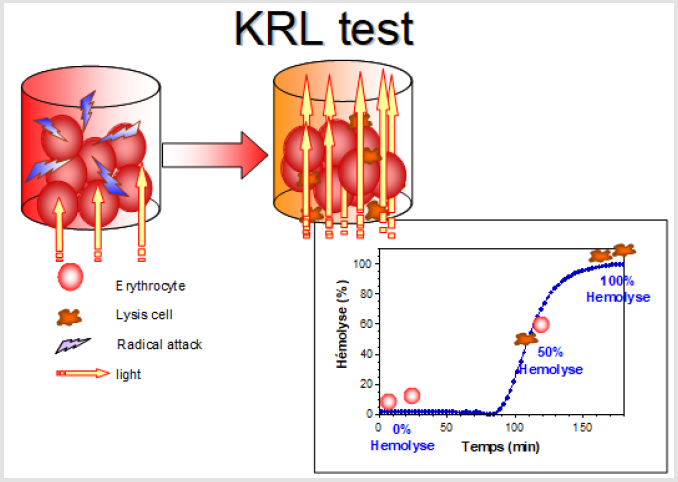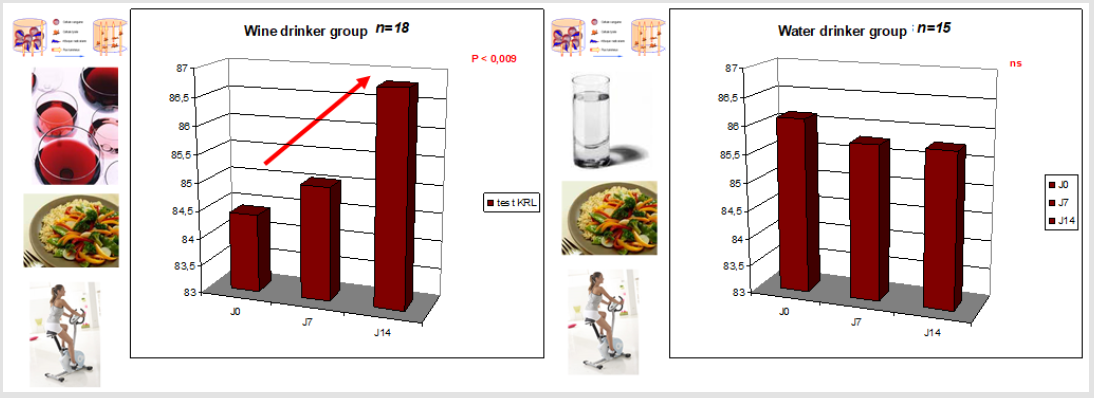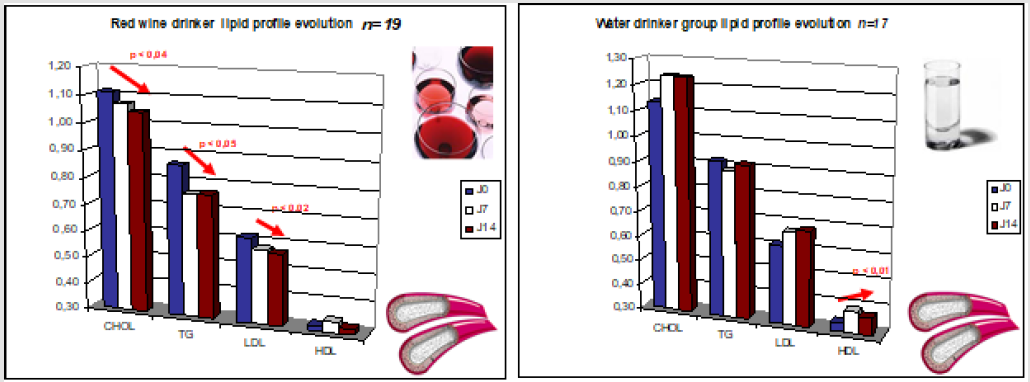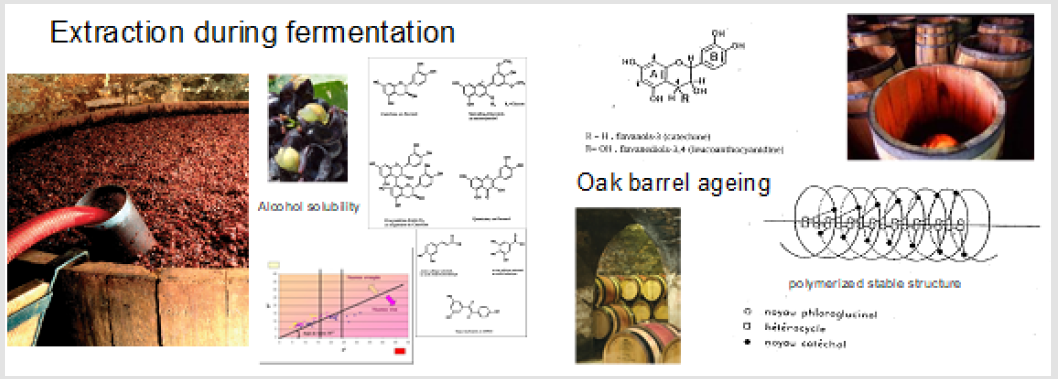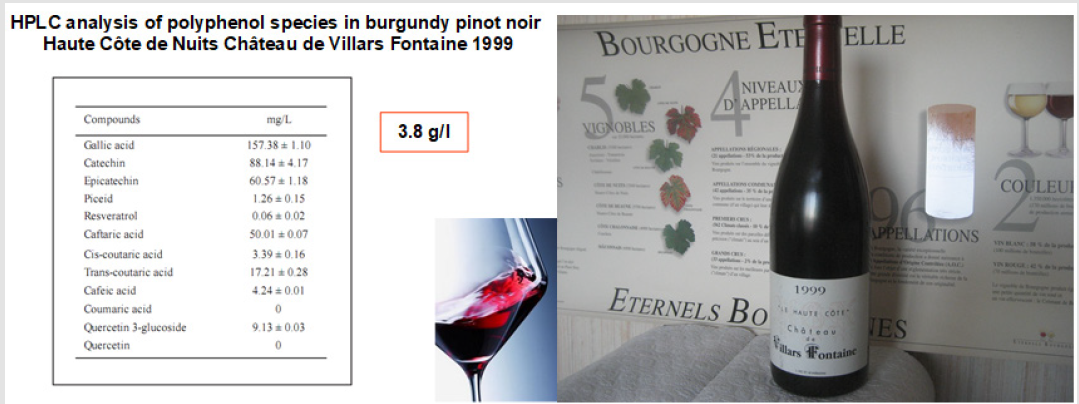Introduction
The cardioprotective effect of moderate and regular wine consumption in primary prevention has been well documented. The goal of the present investigation was to explore the possible benefits of wine intake on secondary prevention in patients with cardiovascular disease (Figure 1) [1].
Materials and Methods
Clinical Protocol
Two randomised groups of early post myocardial infarction patients were compared: one receiving daily 2 x 125 mL of red wine** (n=18), the other water (n=15).
Blood Parameters Measurement
Total cholesterol, LDL, HDL and antioxidant status (Figure 2).
Blood Anti-Oxidant Status
KRL test, based on the hemolysis induced by radical attack, allows to measure the overall blood antiradical resistance. Antioxidant defenses contribute to maintain the membrane integrity and function of cells subjected to a radical attack, up to hemolysis. The resistance of blood at the radical attack is expressed when 50% of blood cells are lysed (T1 / 2 minutes).
Results
Anti-Oxidant Level
For wine drinkers the half hemolysis mean time is 84.74 +/- 3.82 at day 0; 87.06+/-5.50 at D14 (p<0.009). For the abstinent, the averages are 85.63 +/-6.31 at day 0 and 85.34 +/-5.41 at D14. The differences were significant only for the red wine group (Figure 3).
Evolution of Lipid Profile
Wine group had a significant LDL (p<0.02), total cholesterol (p<0.04) and triacylglycerol (p< 0.05) decrease in only 2 weeks. For the abstinent group, total cholesterol and LDL cholesterol increased but not significantly; compensated by a significant increase in HDL. The antioxidant power of serum did not increase, so the increase of LDL leads to an increase of oxidized LDL and consequently deposits of atherosclerotic plaque in the arteries (Figures 4 & 5).
Conclusion
These results suggest that the antiradical effect provided by the Mediterranean diet is only effective if the red wine is an integral part of the program. Lipidic profile is also benefically modified by this red wine diet.
The present investigation demonstrates the advantage of moderated wine intake on secondary prevention in patients with cardiovascular disease (Figure 6).

 Mini Review
Mini Review